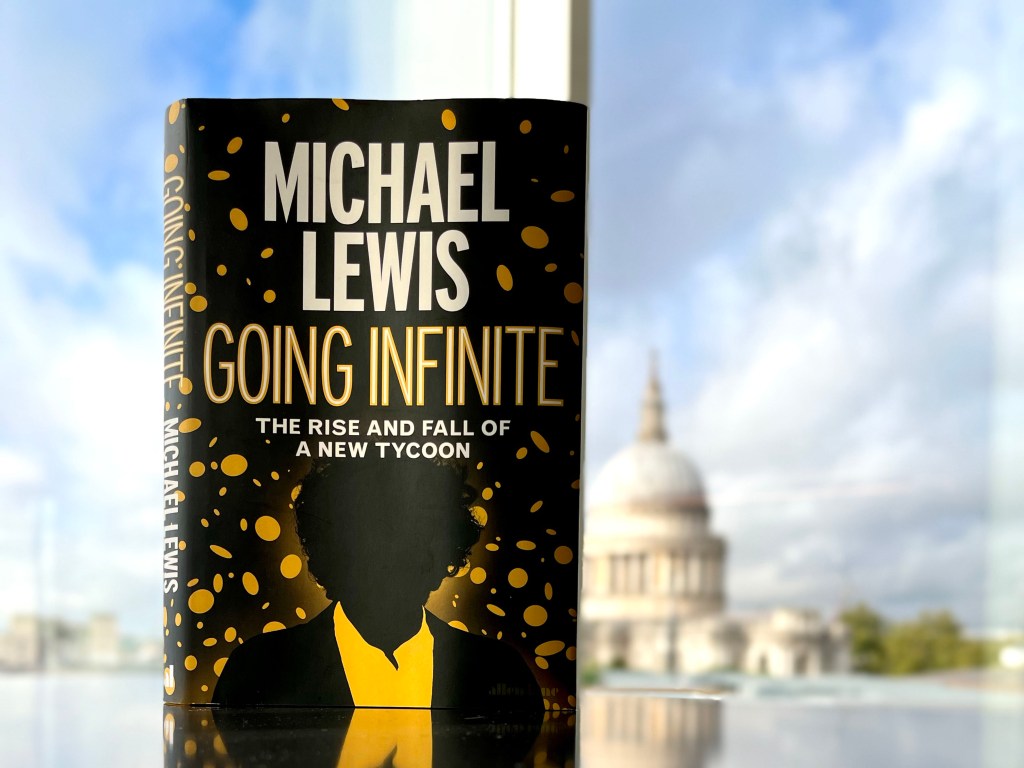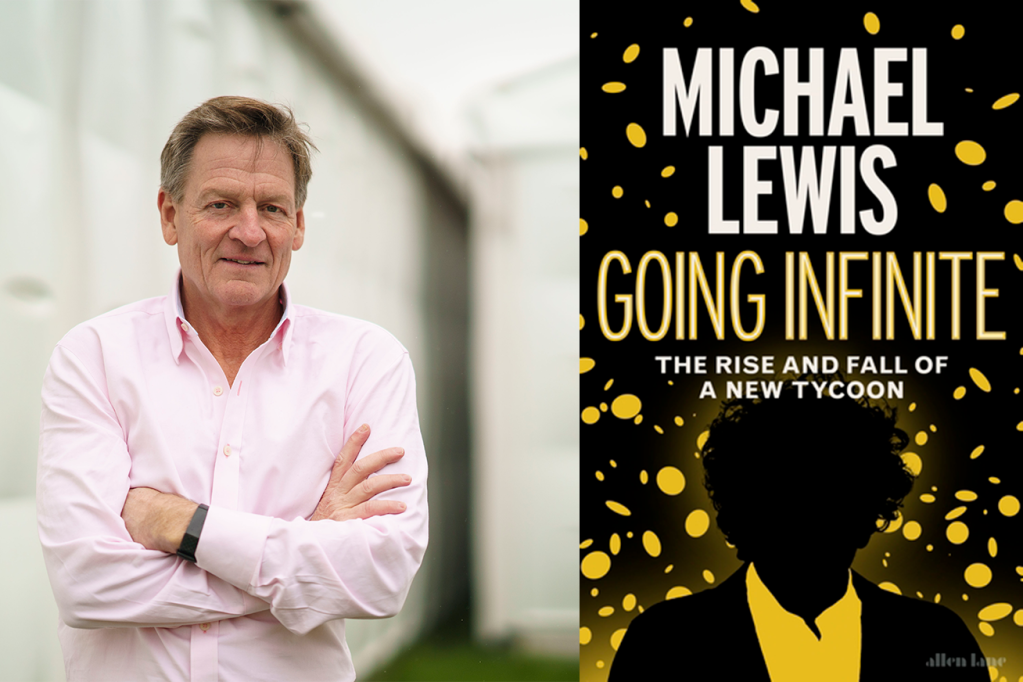Michael Lewis’s latest book, Going Infinite, takes us on a rollercoaster ride in a whole new amusement park – the crypto world. NFT, FTX, SBF – if those three-letter acronyms ring a bell, this book is for you. If they don’t – you have some catching up to do.
With Lewis, you may often wonder – how does he do that? How come he is always in the right place at the right time, with access to the people at the centre of key events. Was it luck, connections, reputation or, perhaps, just a lot of licentia poetica? The more time you spend on the journey with Michael Lewis, the greater your confidence that it is not the latter. Somehow Lewis managed to stick around long enough to witness the very end of Sam Bankman-Fried’s empire – and definitely longer than most of FTX’s staff.
Many say that Bankman-Fried’s empire was built on a pile of tokens, its value not based on any rational or empirical measures. But isn’t that the case for anything crypto? Or for many financial instruments, which are worth only as much as someone is willing to pay for them.
“The firm’s finances were already in a state of chaos.”
Michael Lewis on the condition of Alameda Research in 2018
By 2018 there were already tensions between SBF and the rest of the team, as he insisted on running the algorithm he had conceived in his head even though it was burning money and made no returns. Eventually, though, it was successful. FTX turned out to be just as Lewis portrays SBF – wrinkled t-shirt, cargo shorts, knee jackhammering at four beats per second; it made millions of trades, but everything about it was messy.
Seeing the world of cryptocurrencies from the perspective of people that had such a big influence on it – even if for a relatively short period of time – is imperative for understanding behavior, dynamics and weaknesses. Lewis enables us to get that glimpse. Just like SBF’s favourite game, Storybook Brawl, it is a battle of good and evil, or rather good and chaos. There might have been some genuine intentions behind FTX, but they eventually got lost as disinterest in any sort of controls and governance spread.
“Markets were moving at the speed of CNN, not the speed of data.”
Bankman-Fried on how markets acted relying primarily on the news rather than direct data
We learn from Going Infinite why SBF was hard to read. It was because his facial expressions and gestures were merely a reflection of what he thought appropriate in a particular situation, rather than a reflection of his actual feelings. He went through a change to make himself less off-putting to others, but at the same time communicates with former girlfriend Caroline Ellison through business-like memos, outlining his feelings.

We get a sneak peek of hiring processes and the structure of high-frequency trading firms – and why people like SBF were likely to be their first pick. We also get to see how he and fellow traders exploited the simpler algorithms of other market participants and made money by betting against them.
Years later SBF would do the same to beat Binance bots designed to act in a way that some might describe as wash trading. On one hand FTX pioneered a feature to stop socializing losses by closing any position with a leverage as it turned red before a collateral would be wiped. On another, we read about all the spending that SBF did for marketing and sponsorships – the multimillion deals with Mercedes F1 team, with MLB and Riot Games.
“How the f*** are you only calling us now?”
A South Korean exchange that SBF contacted weeks after $4m-worth of crypto disappeared from Alameda Research
The conclusion Lewis draws is that FTX simply lent traders’ deposits to Alameda for free, and SBF was using Alameda as his private trading (and philanthropy) fund. If Alameda ever posted collateral, it was in FTT, which was essentially an equity in FTX. When FTX collapsed, so did its equity – and the collateral.
The infamous quote from the CCO of Binance (“we are operating as a f**king unlicensed securities exchange in the USA bro”) had to appear in this book, too. But it wasn’t just Binance. Much as Lewis tries to diminish what FTX was doing while praising “efforts” to comply with regulations, it was not that much different from its competitor in exploiting the regulatory system.
Lewis also alludes to a conflict of interest as the lawyers for FTX’s bankruptcy, who take multimillion fees, were also working for FTX (and SBF) before its collapse, and asserts that John J Ray III, who was appointed CEO of FTX to replace SBF, is acting like an amateur archaeologist, rather than intelligently recovering funds.
The biggest – and, perhaps, most controversial conclusion Lewis makes comes in answer to the question: “Where did all that money go? The answer was: nowhere. It was still there.” Whether Ray could have reclaimed more money to cover the losses if he took more time to understand this market, or asked for help from any key FTX people, remains highly theoretical discussion and seems a bit premature.
“Oh, by the way, you have $300m with us.”
Deltec, FTX’s bank in the Bahamas, on a call with FTX during the downfall
As much as it provides an appealing insight into the world of so-called effective altruists, the book remains a bit of a fairy tale. It shows a world of confused idealists being confronted with cold reality as people such as Ray go through whatever assets were left behind them.
It definitely does not do justice to how hard it is to retrieve and sell digital assets, which belonged to Alameda Research, FTX – or rather to their clients. It also simplifies or conveniently omits several facts, like the one that SBF’s parents actually benefitted from Alameda Research.
Yet it does what no other book or article does – provides a perspective that focuses not on those who lost money, but on those who caused those losses. It is not a golden source for truth, but you cannot fully understand the story of FTX without reading this book.













